I’ve been making these homemade Danish butter cookies for years. They’re light and crisp, loaded with buttery flavour and just sweet enough. With a texture that just melts away on your tongue, they’ll give the tinned variety a run for their money too.
These cookies are totally nostalgic and synonymous with the Christmas season. Whether decorated with chocolate, sprinkles, sanding sugar, or nothing at all this classic festive cookie always tastes amazing and is the most delicate and buttery of cookies.
The Danish butter cookie dough is so easy to make and very versatile too. While piping the dough will give you that classic swirl shape, it’s not at all necessary for a delicious cookie. Just like the Royal Dansk cookies in the blue tin, you can create other shapes with the same dough. You can roll it into a log and chill, then treat it like a slice and bake cookie or just use a cookie scoop to create little cookie mounds.
These chewy ginger cookies are also perfect for the holidays.
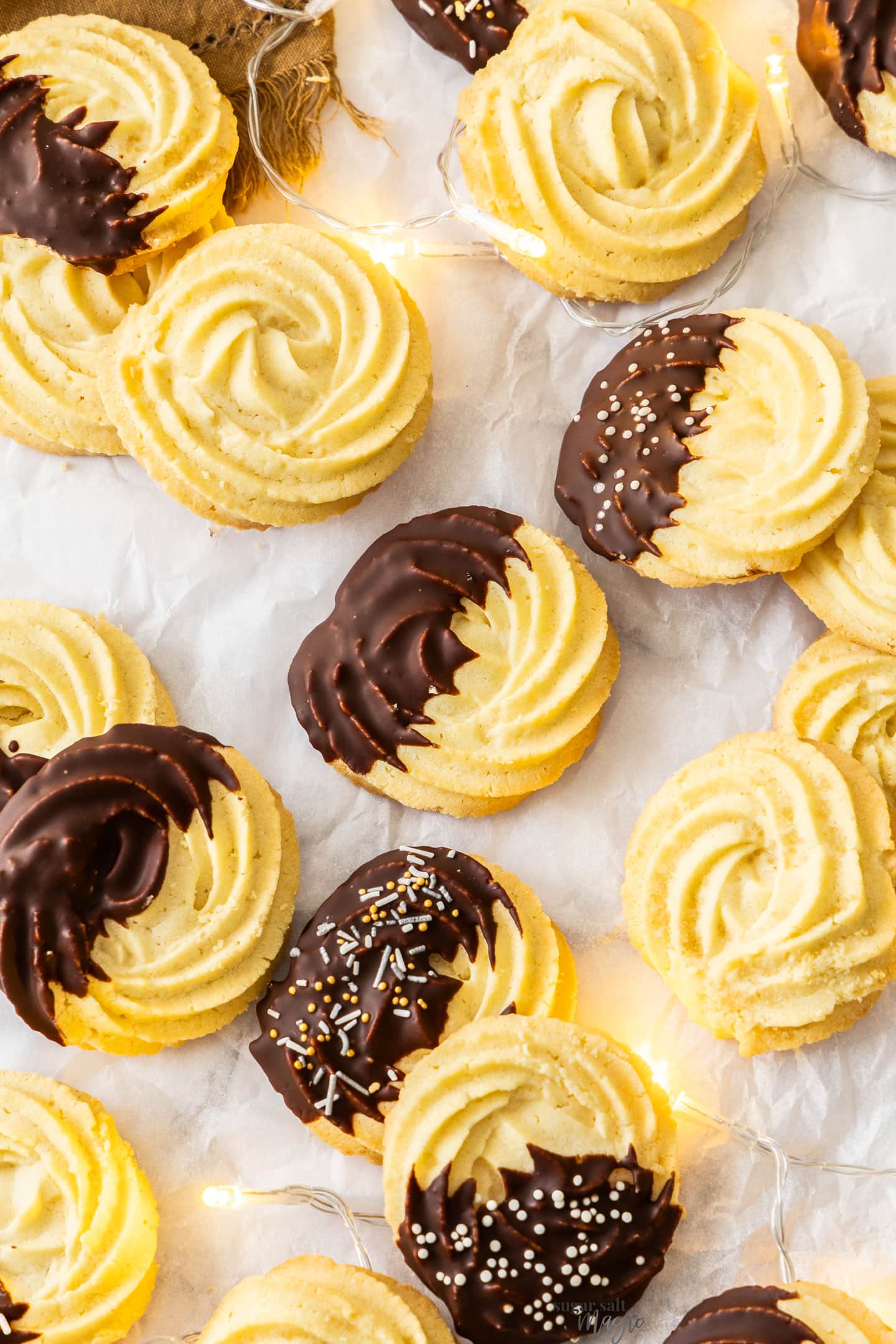
Never Miss a Recipe!
Get the latest recipes straight to your inbox!
Ingredients
There are 6 ingredients in these delectably delicate cookies. You can reduce it down to 5 by using cake flour. Then there are the optional decorating ingredients.
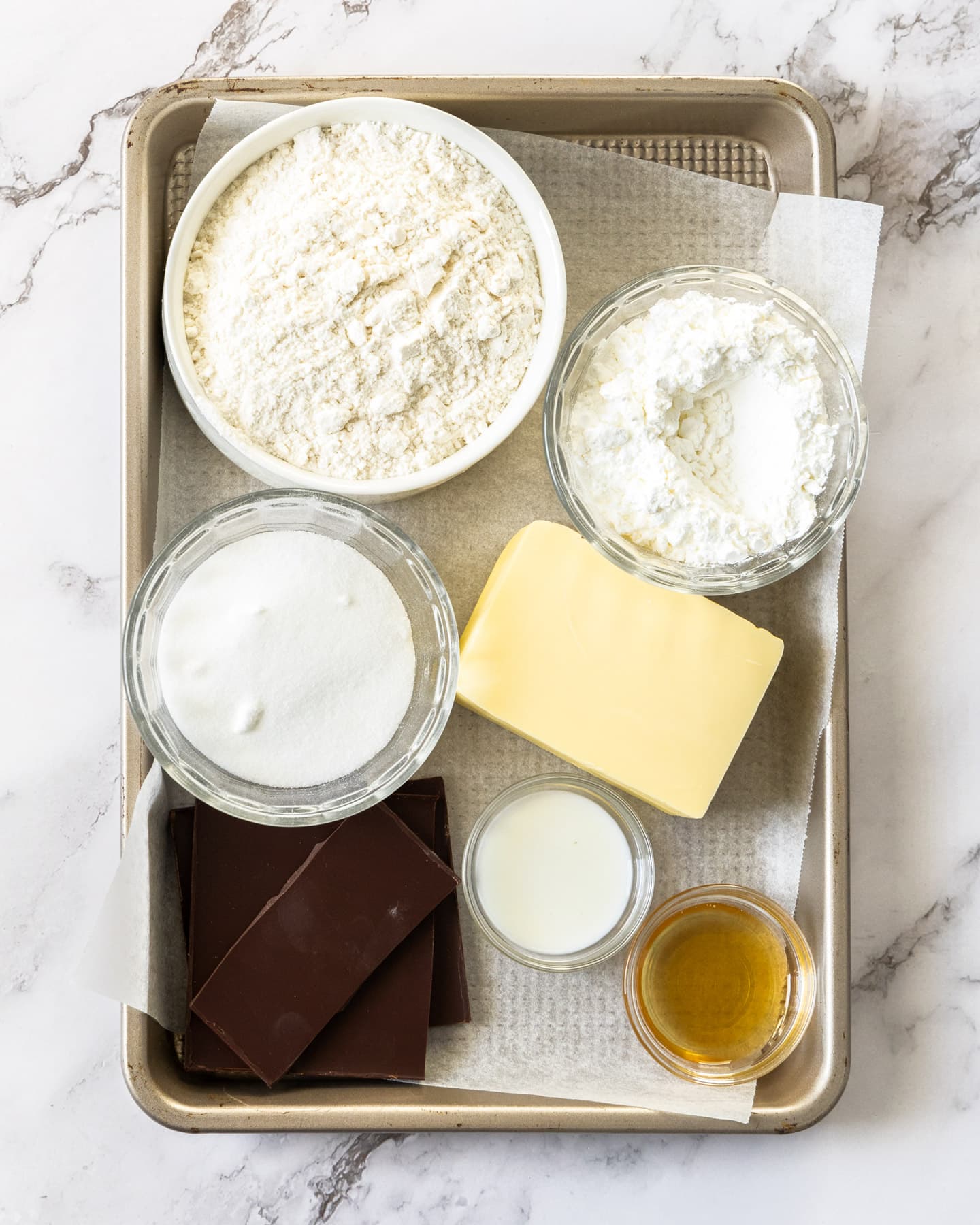
Jump to the recipe for full ingredients and instructions.
Butter: You simply cannot have Danish butter cookies without a good proportion of butter. It’s high butter content is part of what creates the melty texture and obviously the buttery flavour so make sure to use a good quality one and a fresh pack (not one that’s been sitting in the fridge for a while). The butter must be at room temperature before you begin.
Flour: I use a combination of plain flour (all-purpose flour) and cornflour (cornstarch in some countries). The cornflour portion is the other component that gives these cookies a super delicate and melty texture. This combination is my homemade version of cake flour, simply so that I don’t keep an extra tub of flour in my pantry but you can replace BOTH with cake flour if you have it (don’t just replace one).
Sugar: Just a little sugar is all you need in these cookies. I use caster sugar (superfine sugar) but white granulated sugar will work just fine. Don’t use powdered sugar. Caster or granulated will give these cookies the best texture and tjust the right amount of sweetness.
Milk: Just a little milk makes the dough a little easier to pipe.
Vanilla extract: Make sure to use a pure vanilla extract and not vanilla essence. The latter is a synthetic product while the natural flavour of extract is worlds above.
Optional decorations: You don’t absolutely need to decorate your Danish butter cookies. They taste lovely with nothing else on them but a few easy options are dipping them in chocolate (I love dark but milk chocolate or even white chocolate will work too) or scattering over sanding sugar or demerara sugar (turbinado sugar) before baking. If you do add chocolate, you can also add sprinkles or crushed candy canes too.
There is no egg in these Danish Christmas cookies since we’re going for beautifully crisp and pale cookies. Don’t worry, you don’t need egg in every cookie recipe – in fact some of my favourites (like these buttery sultana cookies) just don’t need it.
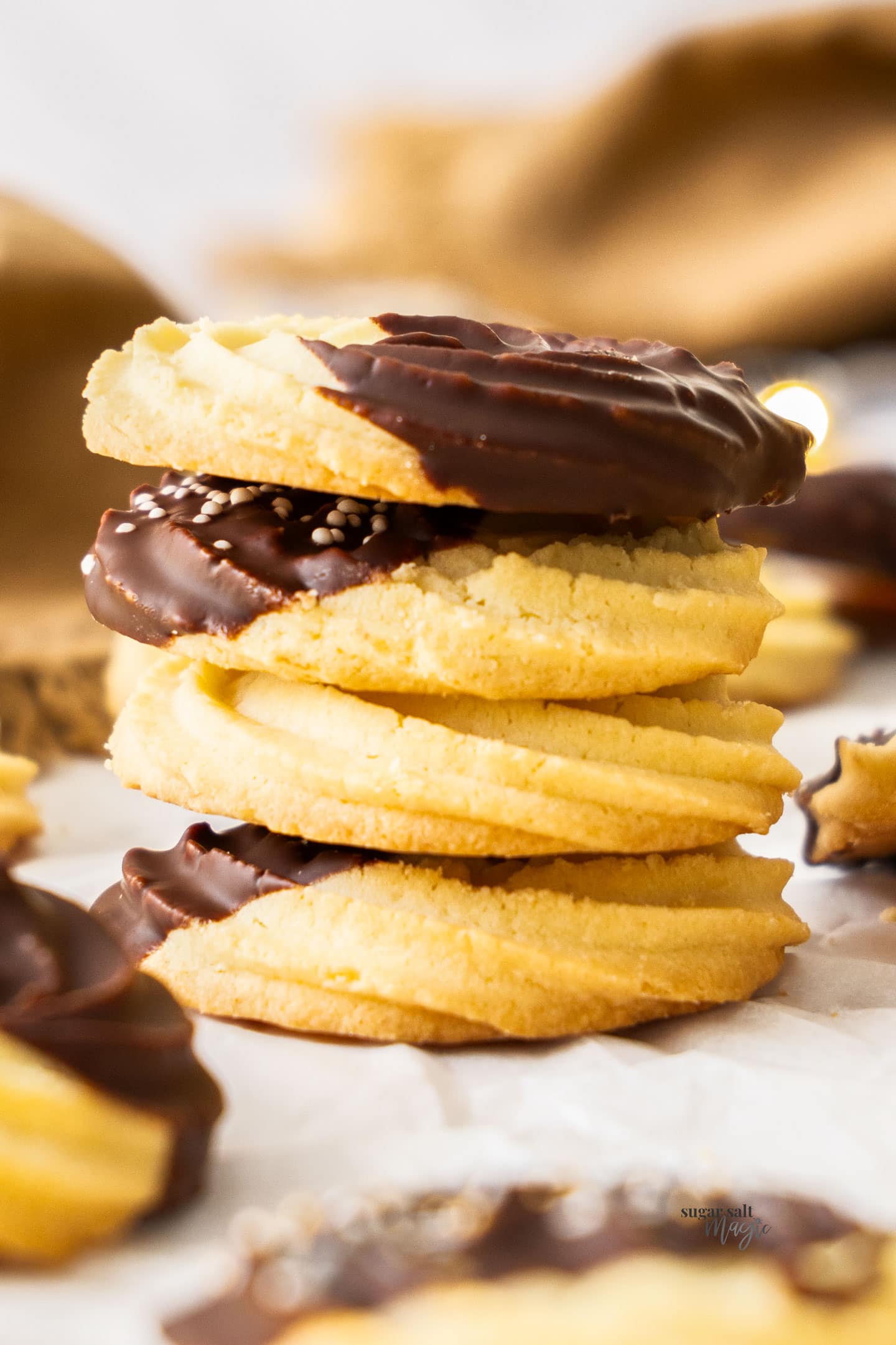
How to make Danish butter cookies
The dough for Danish butter cookies is very simple to make. It’s a stiff dough, necessary for them to keep their shape when they bake, so you’ll need strong hands if you want to pipe them.
However, you don’t need to pipe them. You can simply use a small cookie scoop to create mounds of dough or roll it into a log and chill until firm then just slice and bake!
Jump to the recipe for full ingredients and instructions.
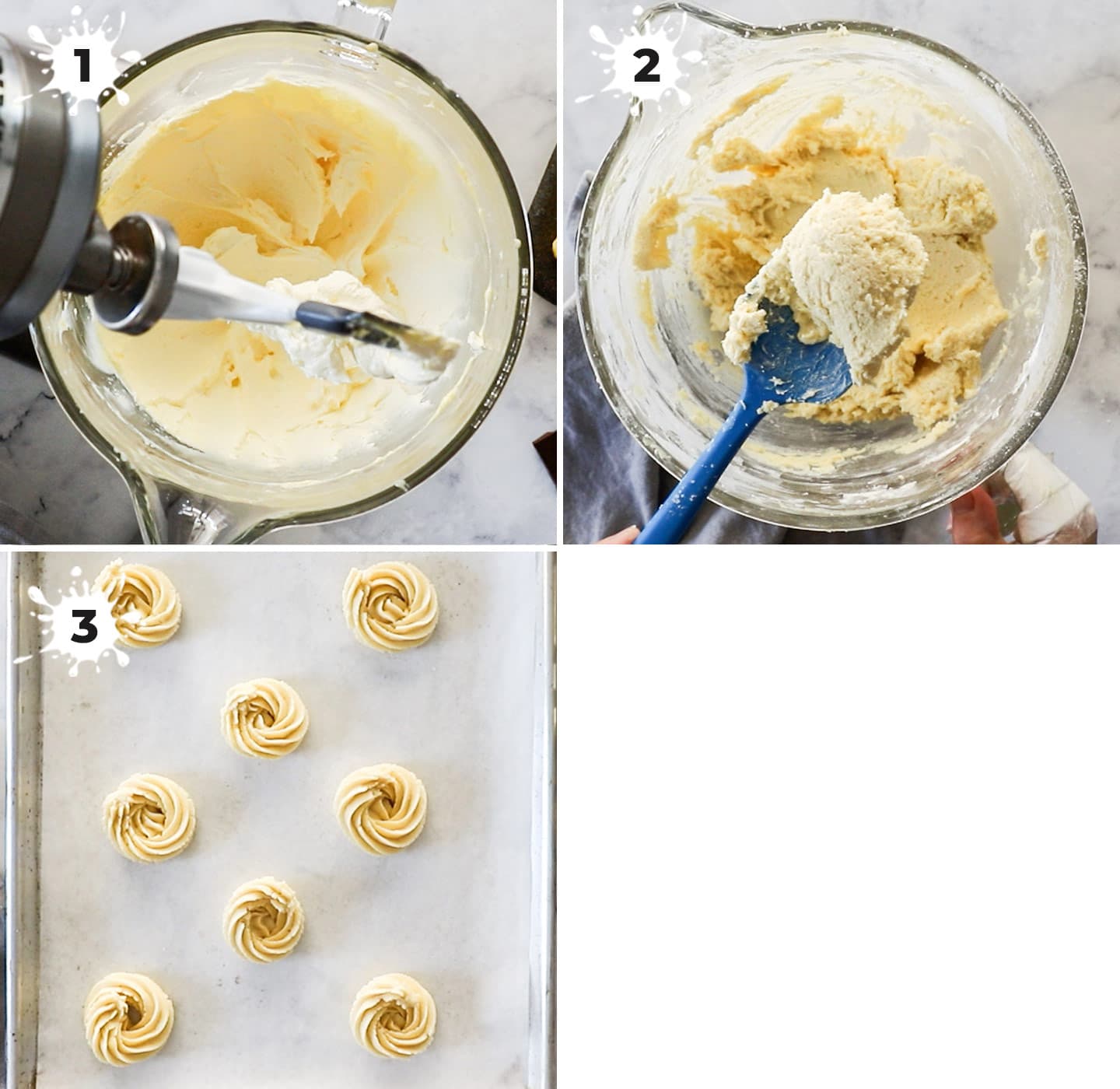
- Start by whisking together the flour and cornflour (cornstarch) so that it’s well dispersed and set that aside.
- Now beat the milk, sugar and softened butter together until very pale and creamy – a good 4-5 minutes should do it.
- Add the vanilla to the mixture and beat that in.
- Finally, add the flour and just pulse the mixer a few times until it starts to blend together, just so that the flour doesn’t all puff up out of the bowl. Then mix on low until it comes together.
Now you have your Danish butter cookie dough ready to use, it’s time to shape the cookies.
- Transfer the cookie dough to a large piping bag fitted with a large open star piping tip like a Wilton 1M. Press it in with the spatula so you don’t get too much air in the bag which can interrupt your nice smooth piping.
- Grab a baking sheet or cookie sheet and line it with baking paper or silpat mats.
- With the point of the piping bag pointing directly downwards, press firmly and pipe the dough into a rosette shape roughly 1 ½ to 2-inch wide.
If piping isn’t your strong suit, don’t worry. You can do a few practice cookies and if you don’t like them, just scoop the cookie dough back into the bag and try again.
- These cookies do spread so pipe them about 2 inches apart on your baking sheet.
- Chill the dough. If you’re impatient, like I am, you might just want to bake them straight away but the cookies will spread far too much this way (making them brown quicker, lose their definition, and too thin and delicate) so be patient for these and chill them for at least 30 minutes.
The upside to chilling the dough, besides the fact that they’ll spread less and keep the definition from the piping, is that you can chill them overnight if you like. You can even freeze the cookie dough once piped and bake them at will.
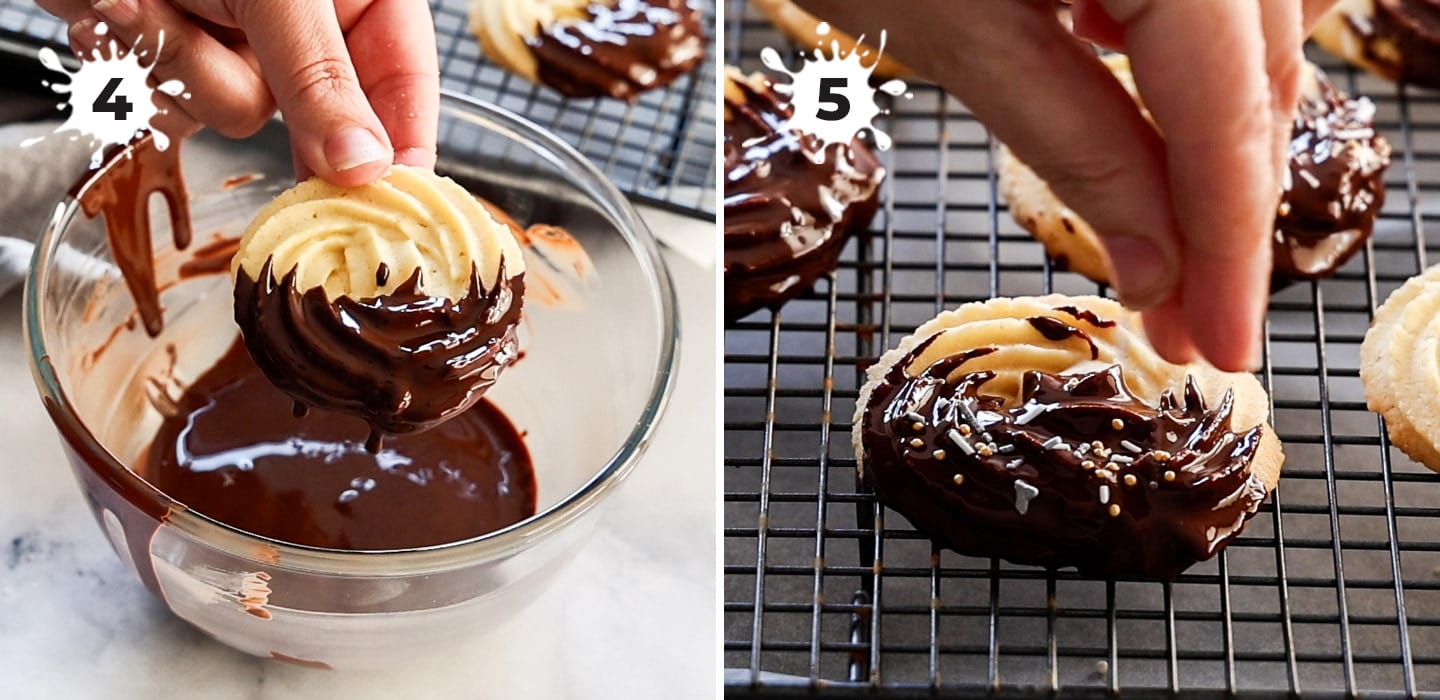
- The final step is to bake the cookies. From the fridge, they’ll bake in about 12-14 minutes. For the best flavour, bake them until they just start turning golden brown around the edges (because browned butter equals phenomenal flavour). Cool the baked cookies on a cooling rack being very gentle when you move them. A spatula is the best way to move them from the baking tray to the wire rack.
- If you want to decorate the cookies, simply melt some chocolate and dip just the top on one side. Place them on a wire rack over a baking tray and scatter over some sprinkles if you like.
Storage
The butter cookie dough can be shaped, then stored in the refrigerator for 2 days or freezer for 3 months. If freezing, freeze on a baking tray first then, once solid, transfer to an airtight container or ziplock bag.
Once baked, the cookies should be stored in an airtight container somewhere cool like the pantry for up to 1 week. If yours are chocolate-coated, they might be best kept in the fridge so the chocolate doesn’t soften too much.
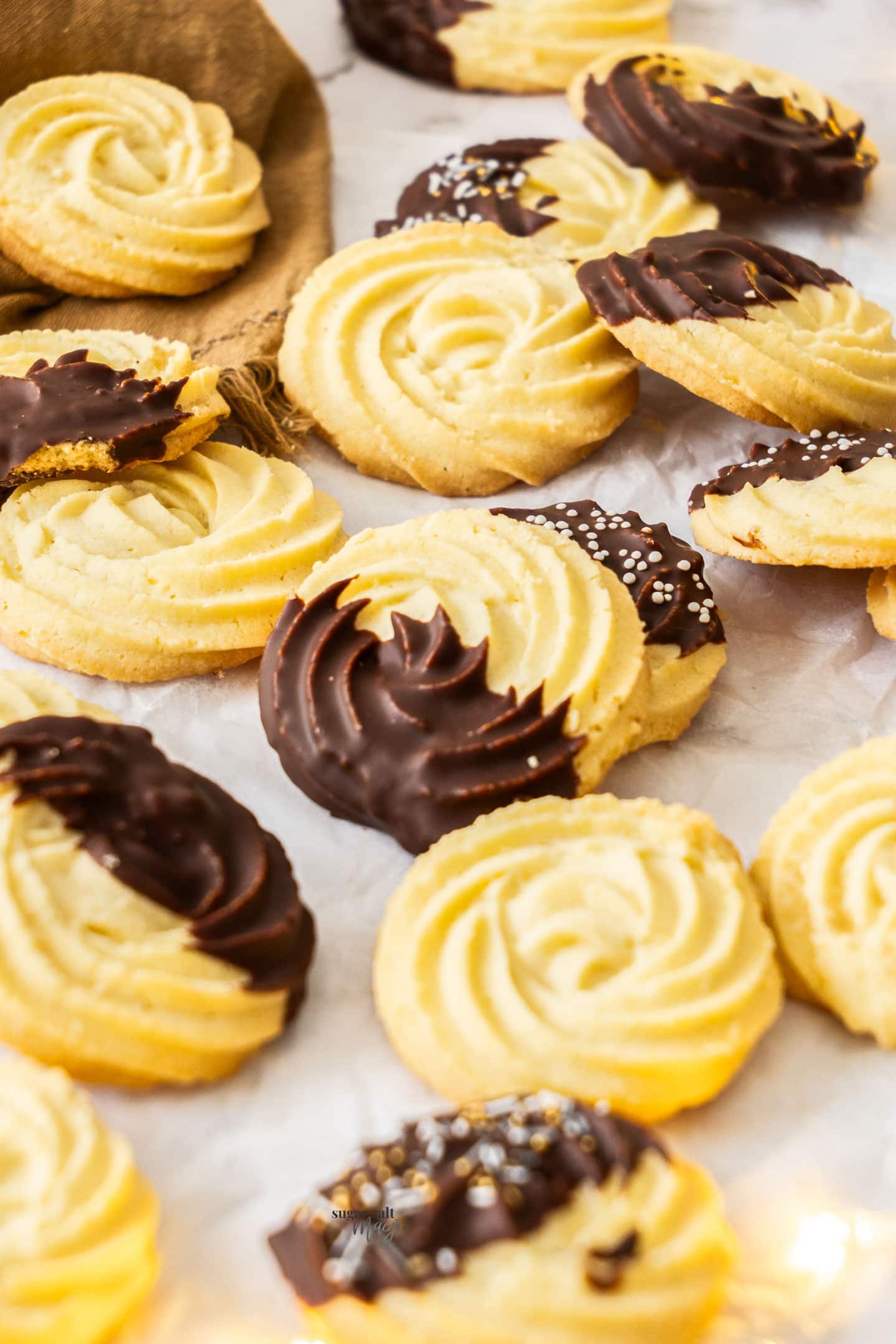
Did you try this Danish butter cookie recipe?
Leaving a rating and comment below the recipe is so helpful!
Hungry for more? Subscribe to the newsletter for free recipes straight to your inbox. Also, follow along on Facebook, Pinterest and Instagram.
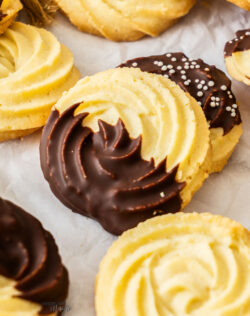
Ingredients
- 226 g unsalted butter, softened (8oz / 1 cup / 2 sticks)
- 100 g granulated sugar (½ cup / 3 ½ oz)
- 2 teaspoons milk
- 1 ½ teaspoons vanilla extract
- 225 g plain flour (all-purp flour) (1 ¾ cups / 8oz)
- 70 g cornflour (US cornstarch) (½ cup / 2 ½oz)
Optional decoration
- 100 g dark chocolate (semi-sweet chocolate), finely chopped (3 ½ oz)
- sprinkles
For best results, always weigh ingredients where a weight is provided
Equipment
- 2 Baking sheets.
- Piping bag with open start tip
Instructions
- Preheat the oven to 180C (160C fan forced) / 350F. Line 2 large baking sheets with baking paper.
- In a medium bowl, whisk together the flour and cornflour so they’re evenly dispersed. Set aside.
- Using a stand mixer with a paddle attachment or hand held electric beater, beat together the butter, sugar and milk until very pale and creamy. Scrape down the sides and bottom of the bowl a couple of times throughout with a silicone spatula.
- Beat in the vanilla.
- Add the flour beating on low until it’s incorporated. Just pulse to start so that it doesn’t fly up out of the bowl.
- Transfer the dough to a large piping bag with a large open star tip.
- Pipe the dough into rosettes about 4cm/ 1 ½ inches wide or so, about 2 inches apart on the prepared pan. You will need to apply firm pressure to the piping as it’s a stiff dough.
- Chill for 30 minutes in the fridge.
- Bake for 12-14 inutes until just starting to brown on the edges. Let them cool on the baking tray for a few minutes, then use a spatula to help move the delicate cookies to a wire rack to cool comoletely.
- Place 3/4 of the chocolate into a microwave safe bowl and melt in 30 second increments stirring really well between each burst. Alternately, melt it in a medium bowl over a small saucepan of simmering water making sure the bowl doesn’t touch the water. Either way, make sure it’s only just melted so that it doesn’t overheat. Add the remaining chocolate and stir off the heat until fully melted in.
- Dip one side of the cookies into the chocolate then rest on a wire rack. Sprinkle over the sprinkles if using then leave to set.
- Please take a moment to leave a comment & rating. It's appreciated and so helpful.
Notes
- Feel free to add a pinch of salt to intensify the buttery flavour.
- Optional flavour: Add ½ to 1 teaspoon of almon extract for an almond flavour.
- Nutrition details are approximate only and do not include the optional decorations – scroll below the recipe to find the full nutritional information.
This post may contain affiliate links that earn me a small commission for my referral, at no extra cost to you. Thank you for supporting Sugar Salt Magic.

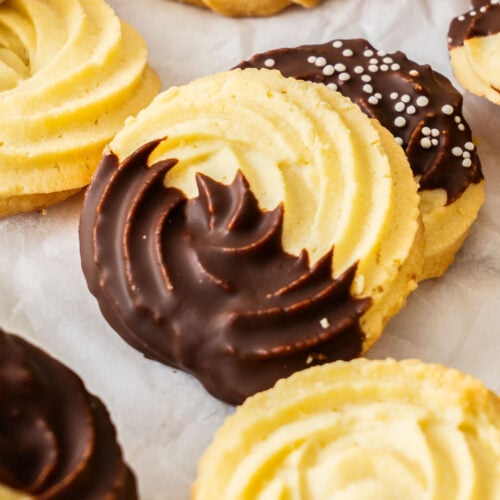


4 Comments on “Danish Butter Cookies”
Do you start piping from the perimeter to the centre, or from the centre outwards? Or does it matter.
Are we aiming to pipe a domed shape or relatively flat. Thanks.
From the inside out is best. Relatively flat – check out my step by step photos in the post.
These are without doubt my favourite biccy (cookie) with ginger creams a close second. I generally buy them. My son makes the ginger creams.
Would they be less calories if I make them myself !!!!!
Joking aside thank you Marie. I look forward to making them with your recipe.
Pamela
Thanks so much, Pamela. There’s only calories if you’re counting 😂